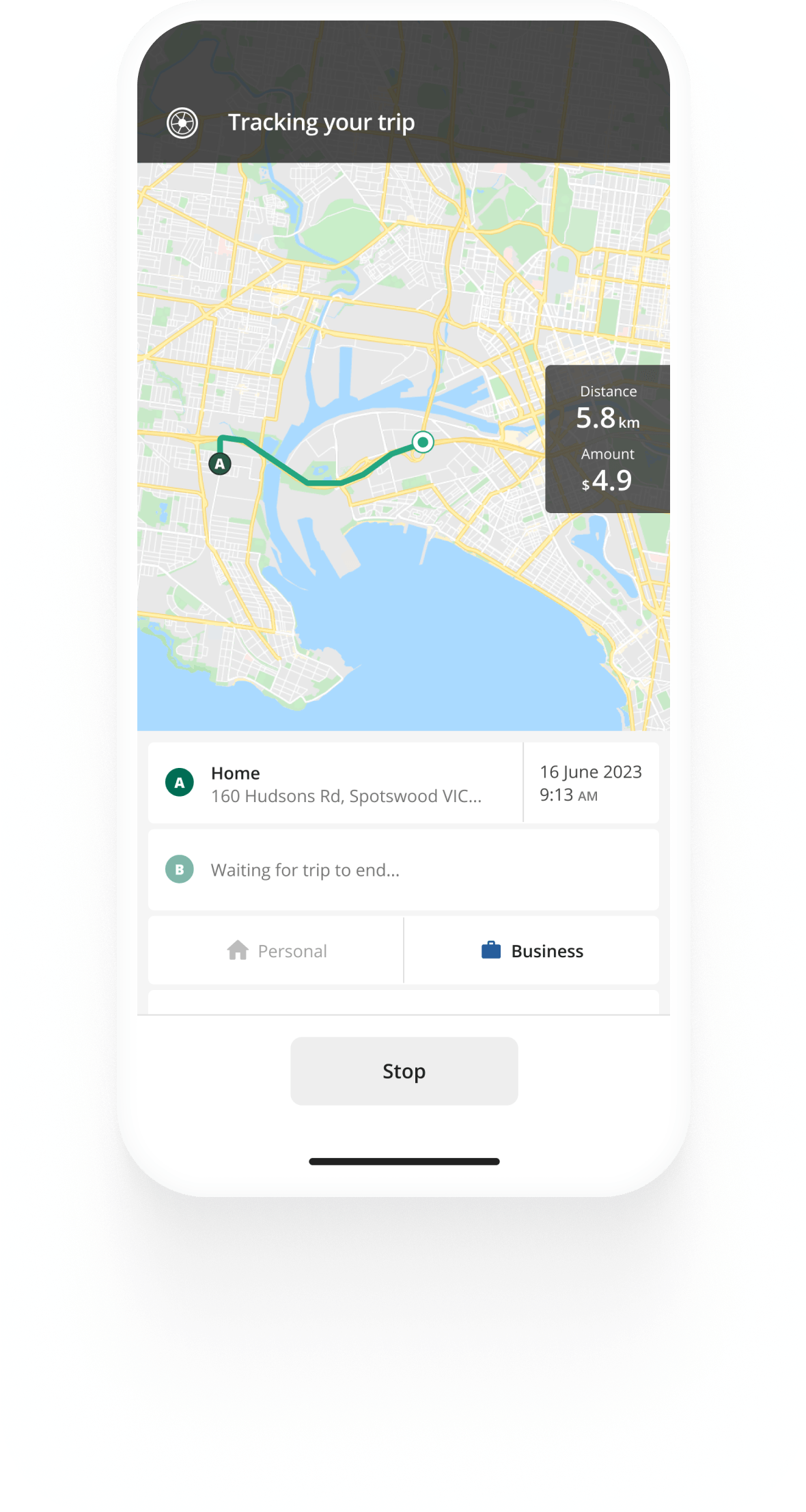Track mileage automatically
Get startedThe Cents per Kilometre Method
The cents per kilometre method allows you to deduct your car expenses for business-related travel throughout the year. You can deduct a predetermined rate per business kilometre. The rate is set by the ATO every year and is meant to cover the expenses of running your car, including registration, insurance, fuel, maintenance and repairs, as well as car depreciation.
The ATO cents per km rate for the 2025/2026 tax year is 88 cents. The cents per kilometre method allows you to claim up to 5,000 business kilometres per car each year.
Requirements for using the cents per km method
You can use the ATO cents per kilometre method to claim your car expenses if you fulfil the following requirements:
- You are an employed individual, and your employer has not reimbursed you for your business kilometres.
- You are a sole trader or a part of a partnership where at least one of the partners is an individual.
- You own or lease the car or hire it under a hire-purchase arrangement.
- Your claim is only for work-related kilometres.
- You claim expenses for a car, which the ATO defines as a vehicle that can carry a load of less than 1 tonne and fewer than 9 people, including the driver. Motorcycles, buggies and other similar vehicles are not considered cars.


Kilometre tracking made easy
Trusted by millions of drivers
Automate your logbook Automate your logbook

Automatic mileage tracking and ATO-compliant reporting.
Get started for free Get started for freeHow to calculate your claim with the cents per km method
Calculate your cents per km claim for car expenses by multiplying the number of business kilometres you travelled in the car by the rate per kilometre for the tax year.
For example, throughout the 2025/2026 tax year, you travel a total of 3,000 km with your car for business. You will be able to claim 3,000 km x $0.88 = $2,640 in work-related car expenses for the year.
You can also use our ATO cents per kilometre calculator to quickly work out how much you will be able to claim at tax time.
Records you need to keep for the cents per km method
You need to be able to show that you own or lease the car you are claiming for and how you work out your business kilometres.
While employees need to keep records that show how they work out their business kilometres, sole traders and those who are in a partnership aren't required to provide written evidence to show exactly how many kilometres they travelled. However, the ATO may still ask to see how sole traders and those in partnerships worked out their business kilometres.
We recommend that everybody, as a minimum, keep a record of:
- The date of each trip
- Whether it was business or private
- The distance travelled in km
This information is sufficient for you to work out the number of kilometres you can claim a tax deduction for.
Your records can be a physical logbook, a spreadsheet, or a system, such as a mobile app (this is exactly what we do here at Driversnote).
You must keep your records for 5 years from your tax claim submission in case of audits and tax checks by the ATO.
The logbook method as an alternative to the cents per km method
As an employee, a sole trader or somebody in a partnership driving a car for business purposes, you can choose to claim car expenses by the logbook method instead of the cents per kilometre method.
The logbook method allows you to claim the actual car expenses instead of using a set rate per kilometre. These are fuel, oil, registration, insurance, lease payments, services, repairs, tyres, electricity expenses, interest charges and car depreciation.
The logbook method requires that you keep all receipts associated with your car expenses and a detailed logbook, making it more complicated than the cents per km method. This is not to say the method doesn't have its upsides, including lifting the limit of 5,000 kilometres of the cents per km method.
We have also compiled advice and considerations on how to choose if the cents per km or the logbook method is for you.
FAQ

Tired of logging mileage by hand?
Effortless. ATO-compliant. Liberating.
ATO Mileage Guide
- For Self-Employed
- For Employees
- For Employers
- The Cents per Kilometre Method
- The Logbook Method
- ATO Log Book Requirements
- Claim Car Expenses In 5 Simple Steps
- Calculate Your Car Expenses Reimbursement
- ATO Car Expenses Deductions
- Car Fringe Benefits Tax
- Is Mileage Reimbursement Taxed?
- Historic Cents Per KM Rates
- ATO Cents Per KM Rate 2021/2022
- ATO Cents Per KM Rate 2020/2021